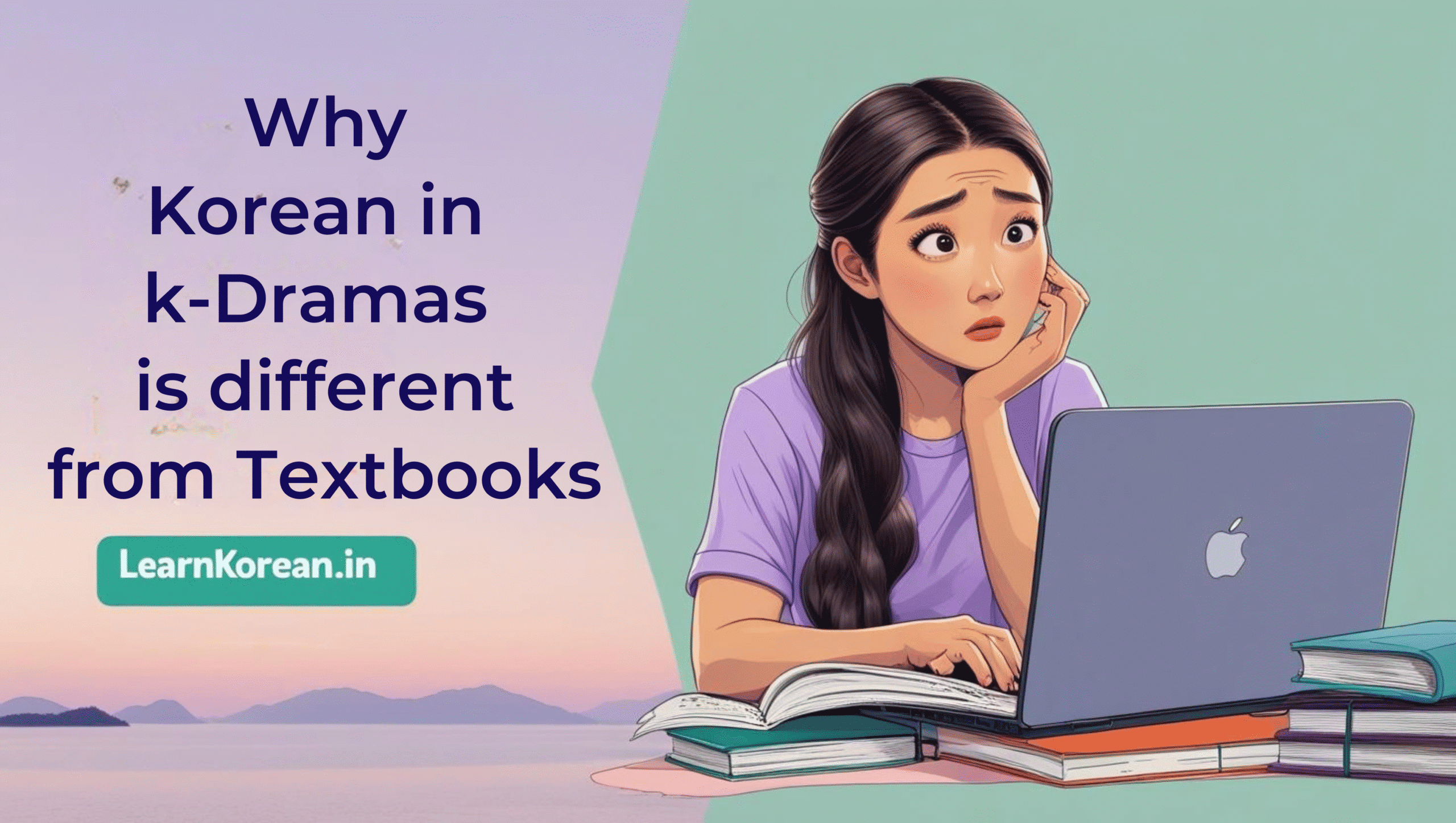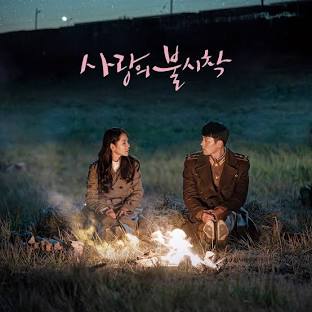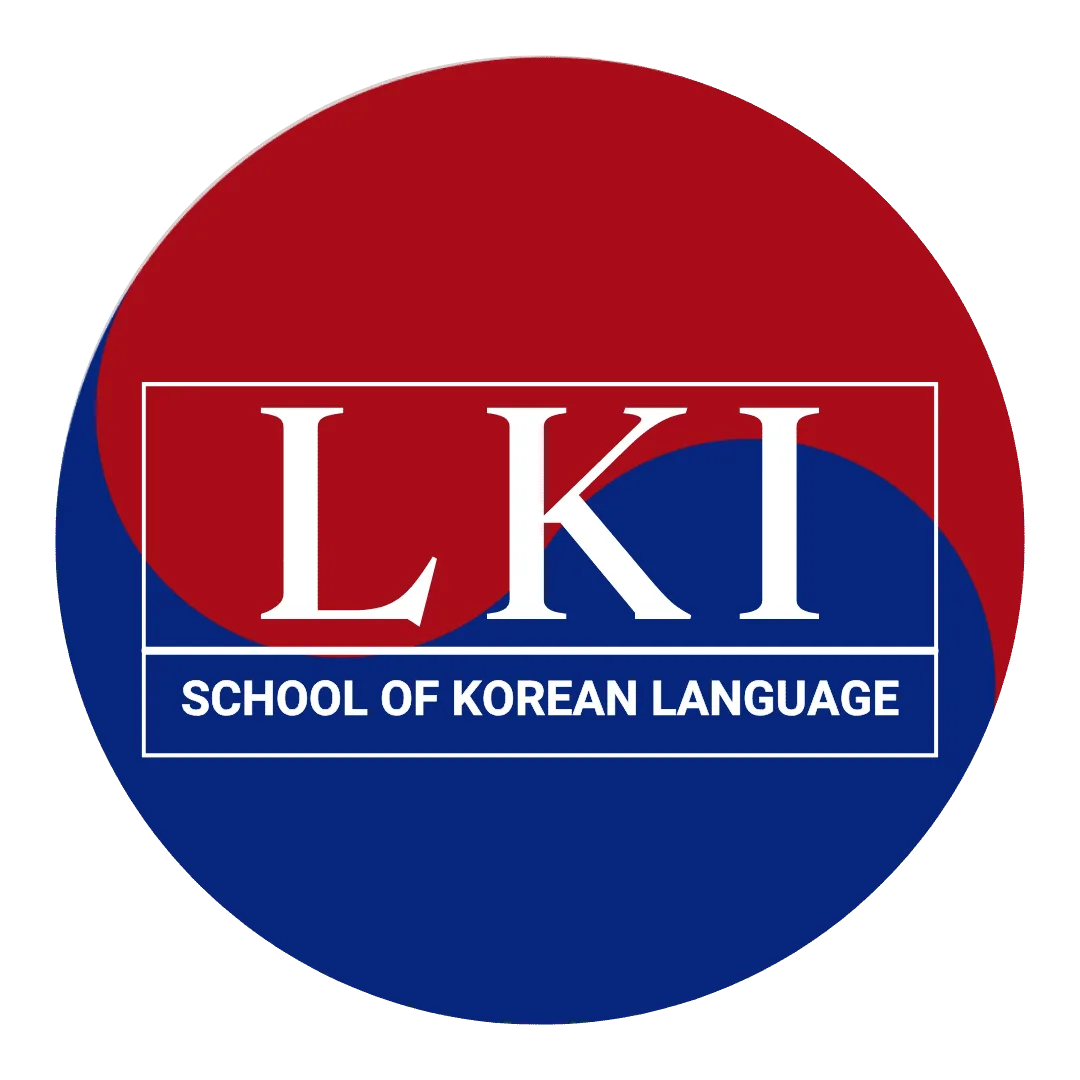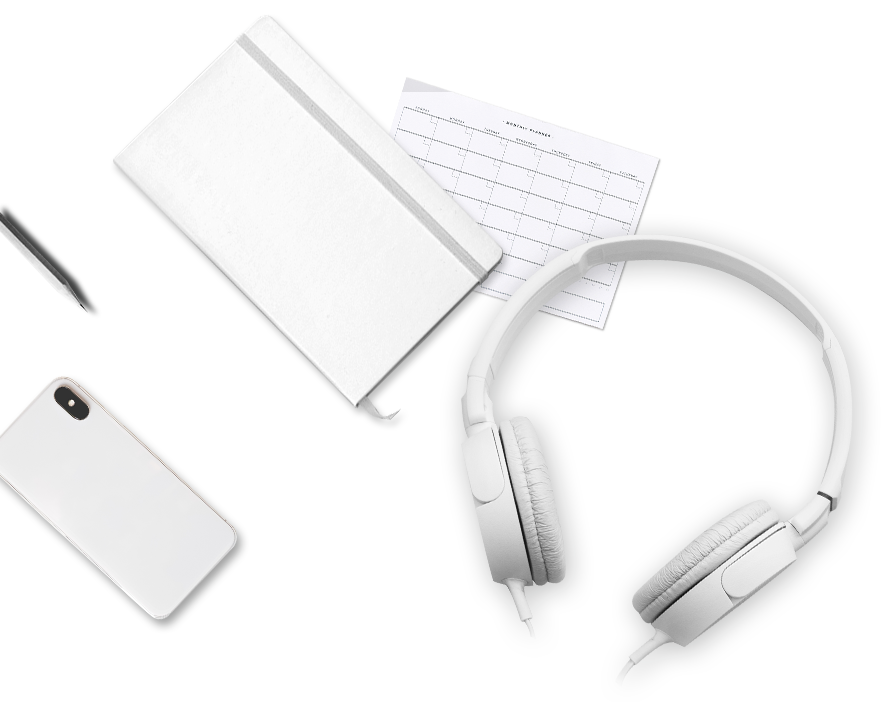
If you’re an Indian student of Korean, I am pretty sure that you’ve watched dozens of K-dramas and fallen in love with the way the actors speak.
Their Korean sounds emotional, dramatic, fast, and sometimes super cool!
But when you open your Korean textbook, the sentences seem slower, clearer, and very formal.
(almost like a polite speech.)
So, what’s going on? Why is Korean in dramas so different from what you learn in books?
My students always ask me "when i will be able to understand the Korean without subtitle?"
"Till what level do i need to study Korean to talk like native or people in k dramas?"
Let’s break it down in a fun, easy-to-understand way. so, you know what to expect, and how to balance both for your real Korean learning journey.
Textbook Korean V/S K-Drama Korean
The Korean you learn in textbooks is known as standard Korean.
It’s polite, grammatically correct, and designed for beginners.
This version is usually used in:
- In class
- News channels
- Talking to a strangers or elders
- Formal presentations, Meetings or Speeches.
For example:
안녕하세요. 저는 인도에서 왔어요. 한국어를 배우고 있어요.
(Hello. I came from India. I’m learning Korean.)
This above sentence have a proper subject, particles and a proper ending too.
However, In K-dramas, you’ll hear a lot of informal, emotional, or regionally influenced Korean
They try to show real people, emotions, fights, romance, and funny moments.
For example:
야! 뭐 하는 거야? 진짜 미쳤어?
(Hey! What are you doing? Are you really crazy?)
This is a very common sentence in almost every other drama but you will not find this in your textbook easily.
Because, Words like 야 (ya), 진짜 (jinjja), and 미쳤어 (michyeosseo) are casual, and sometimes rude if used in the wrong situation. And students should know their correct usage and nuance before using them randomly with any Korean.
I will suggest you to stick with your book way until you complete your level 2 or 3 properly to understand the difference.
Formal vs Informal?
In real life, just like in India, you must speak differently to a teacher than to a friend. And when to use what, is a very important part of Korean unless you want to offend someone.
So, here is an easy way to remember this.
In Korean:
To elders, strangers, or bosses -use formal speech (존댓말 – jondaetmal)
To friends or people younger than you -use casual speech (반말 – banmal)
Example from drama "Crash Landing On You":
괜찮아? 많이 놀랐지?
Are you okay? You were really shocked, right?
This is informal (used between friends or lovers).
The key is:
Textbooks teach you 존댓말 first to be safe and respectful. But dramas mix both using banmal for younger characters, and switching to jondaetmal when someone becomes serious.

Use of Fillers and Reactions
The other difference i noticed is, that the Korean dramas use lot's of fillers.
For example:
- 헐 (Heol) – What?! / OMG
- 대박 (Daebak) – Awesome / Wow
- 아이씨 (Aissh) – Ugh / Darn it
- 어머 (Eomeo) – Oh my / Oh dear
you can easily hear them 10 times in one K-drama episode and that's actually how people in real life talk in Korea.
Use of Dialects in K-Dramas
Sometimes you see the subtitle saying something in English that you know in Korean. But the actors words are totally different that you learned in Korean for that particular sentence.
For example:
Subtitle says- "what's' wrong?" in English. But, the actor says in Korean 와 이라노? (Wa irano?) instead of 왜 그래요? (Wae geuraeyo?)
That's because of different dialect. it is in Busan dialect and That is the most common dialect, Gyeongsang-do dialect (used in Busan). It’s louder, rougher, and very different from the Seoul standard.
Some dramas like Reply 1988 or Taxi Driver) used satoori (사투리) – Korean regional dialects.
My answer is Both are real it is just, they just have different purposes. They are getting used for different things.
Dramas teach you how real people speak naturally.
so, my suggestion is to learn both properly and,
Here are my tips that can be helpful for you to learn it easily:
- Turn on Korean subtitles - Try to Match the spoken line with Korean text.
- Don’t memorize everything - Focus on repeating useful daily expressions.
- Pause and repeat - Try to replay short lines and practice saying them.
- Keep a notebook - Write new phrases, expressions, and slang with meanings.
- You can also note sentence endings like:잖아 (janha) - You know. and -지 (ji) – Right? these help you sound more natural.

